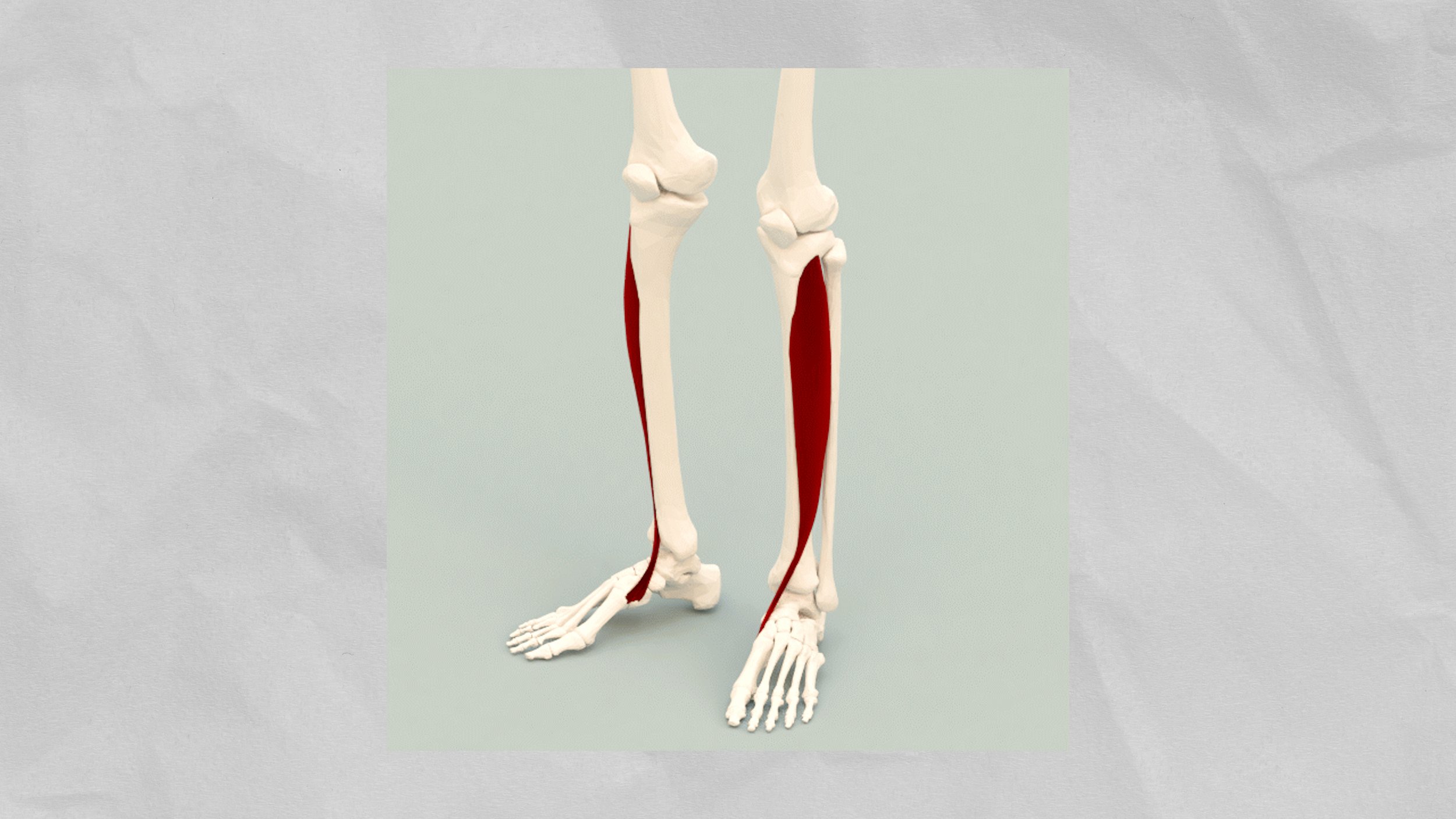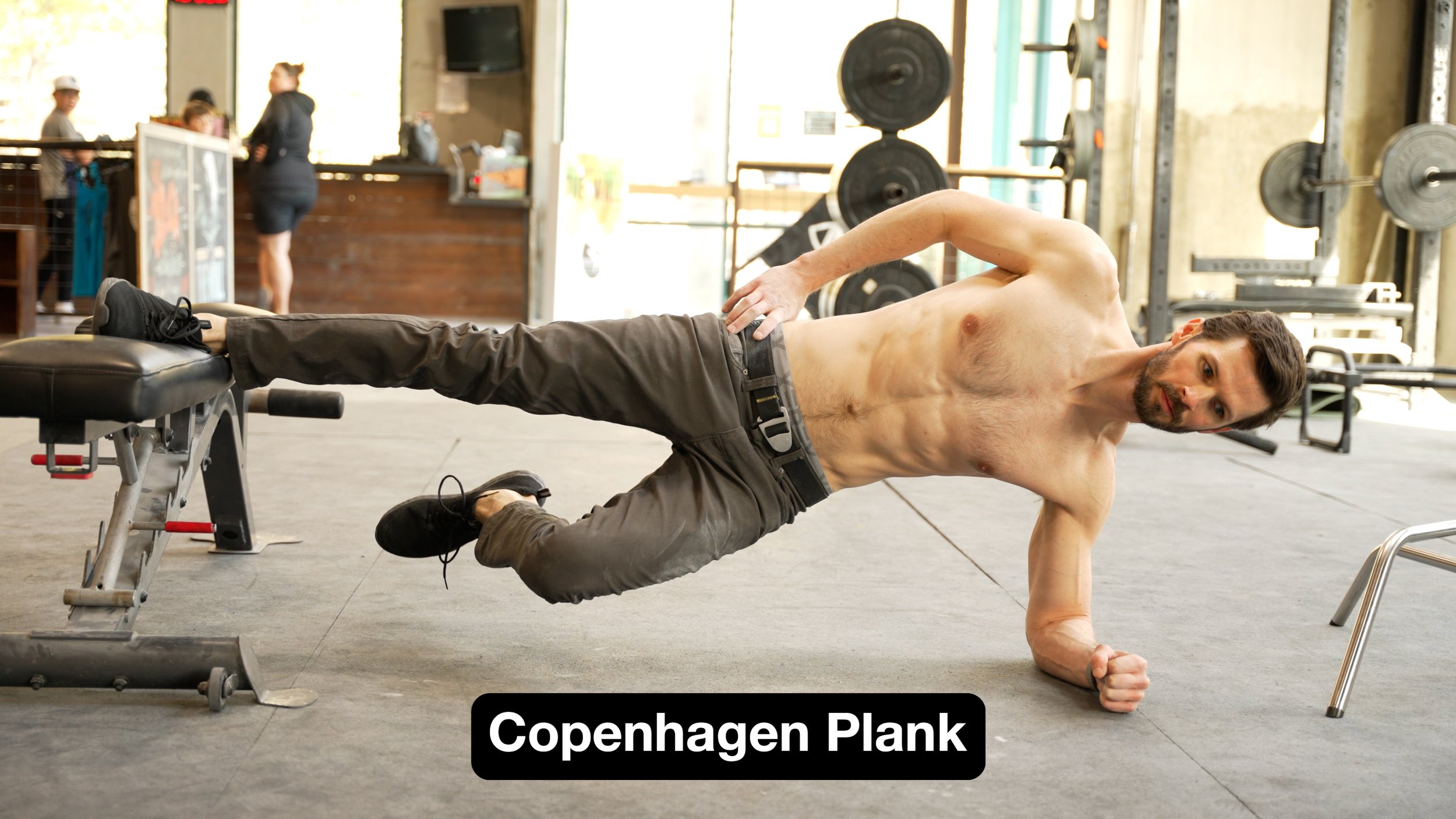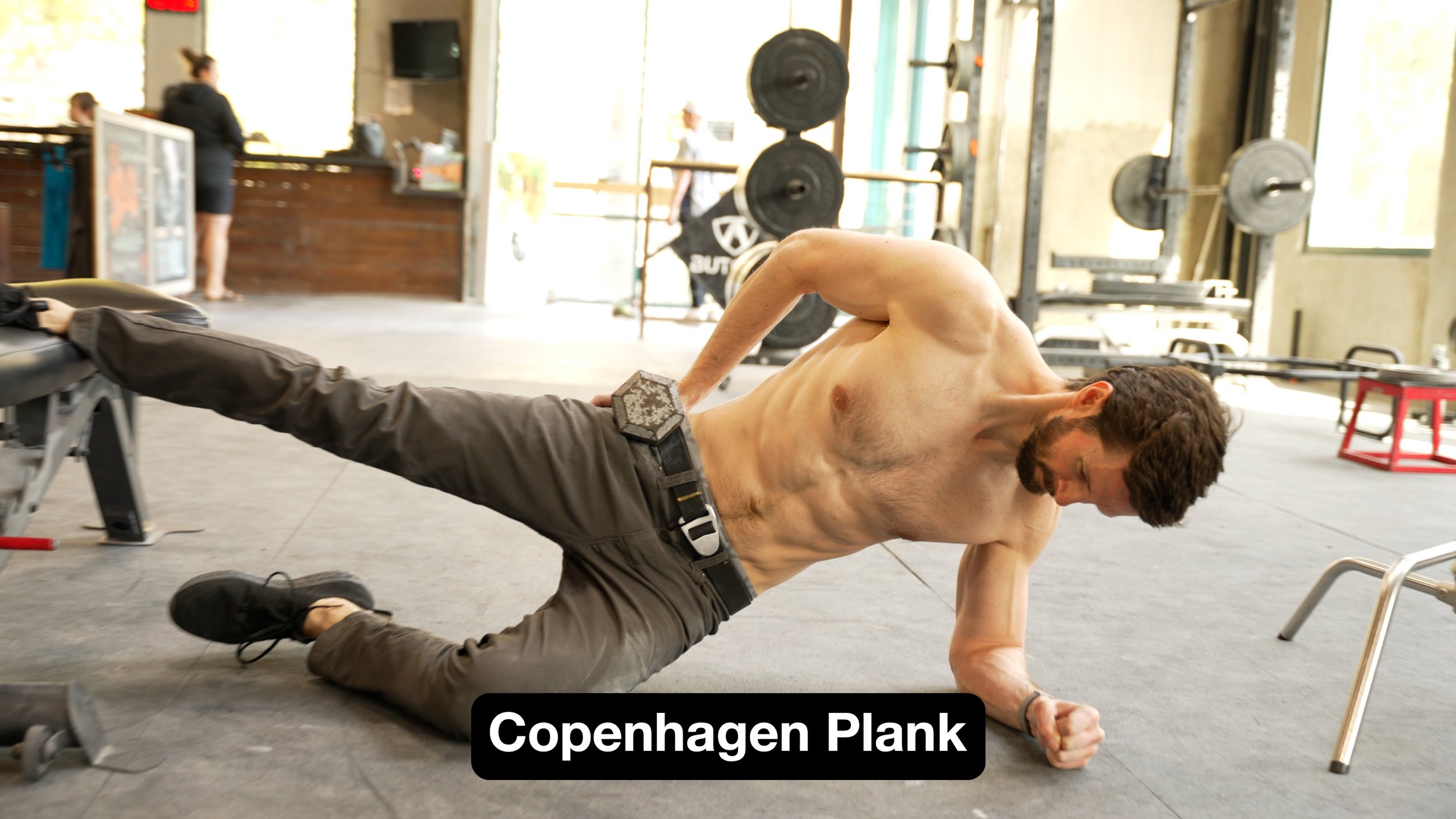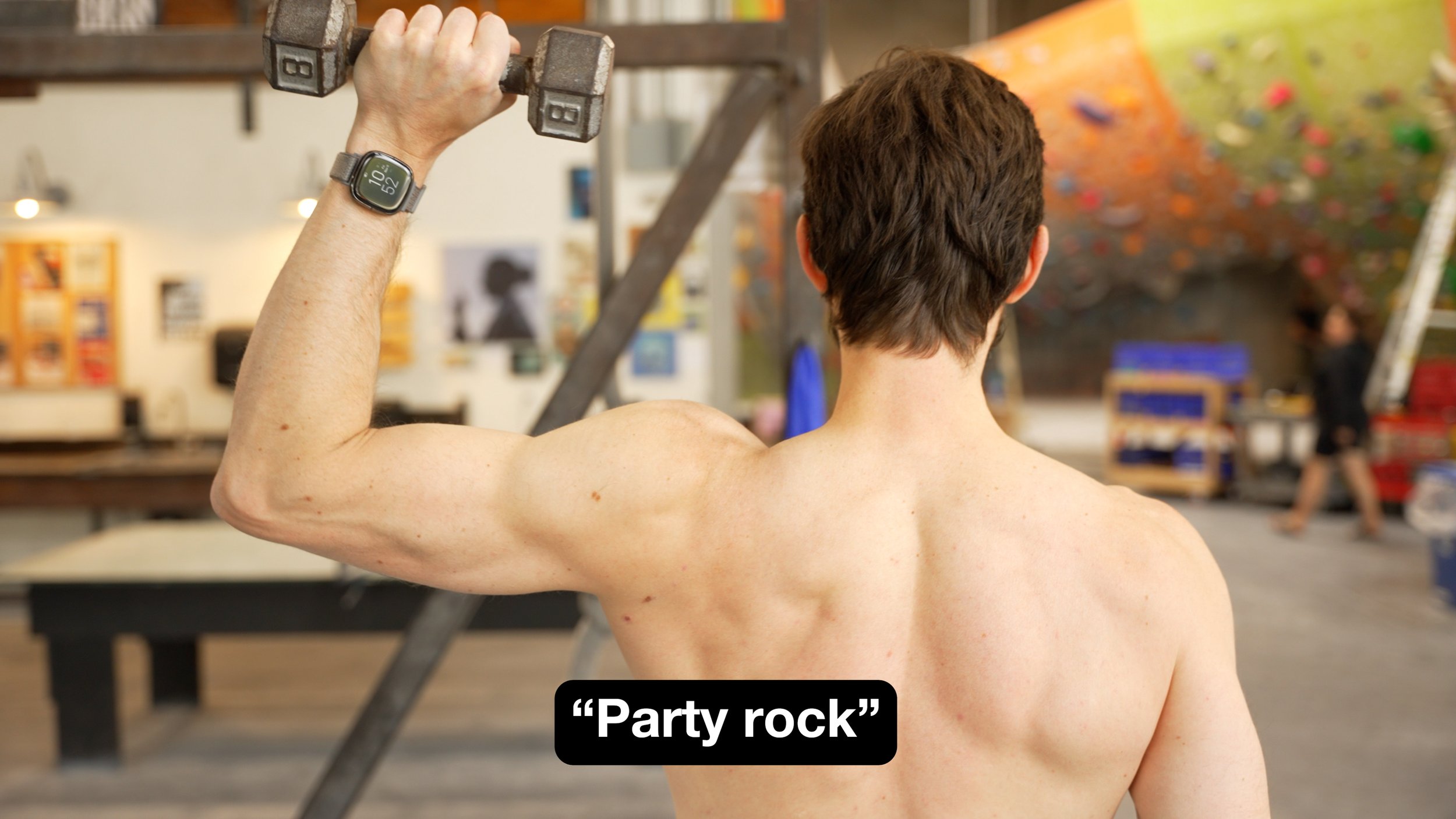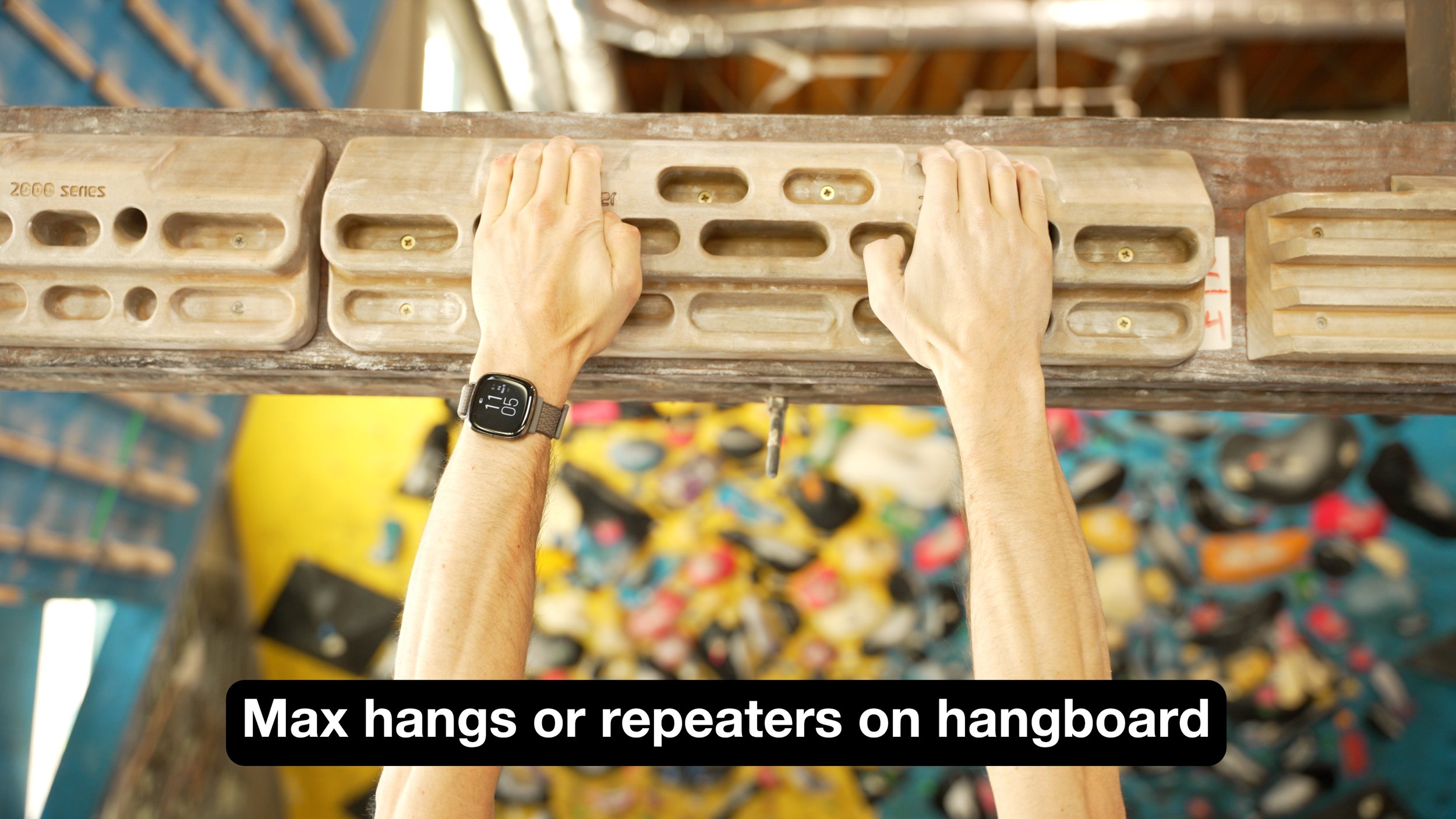Top 10 UNDERTRAINED Muscles in Rock Climbers (Niche to Game Changing)
Hooper’s Beta Ep. 119
INTRODUCTION
For most people, training the primary movers in climbing is by far the best bang for buck. Pullups, hangboarding, inverted rows, tricep dips, etc. can all be fantastic. But as a physical therapist who works with injured climbers, and as a climber myself, I tend to see a number of overlooked muscles that I think a lot of us can benefit from training, whether for preventing injuries or increasing climbing performance. So we’re going to cover our top ten most under-trained muscles for climbers and the exercises I would recommend for each. Some of these will be quite niche, while others will have you thinking “why didn’t I think of that!?”
#10 Lumbricals
These things are wild and they don’t get talked about often, although anyone that’s had a rough encounter with a two-finger pocket has probably experienced their wrath. Lumbricals are these weird feather-looking muscles deep in our hands that connect to multiple tendons. When your fingers get pulled apart, it creates a shearing force on the lumbricals that can quickly lead to an injury. Most people don’t do a lot of pocket climbing, nor do they train pockets, so these muscles remain rather “fragile.” Lumbricals aren’t the type of muscle that you’re going to spend hours training every week for crazy huge gains, but a bit of “exposure therapy” goes a long way towards injury prevention. You can obviously train pockets on a hangboard, but this can be a bit daunting if you’re inexperienced so my preferred method is mobile board rows with two fingers. You can start with very light resistance and work your way up, and the slow repetition style allows you to stop if there is any discomfort.
#9 Anterior Tibialis
The anterior tibialis aka the bat hanger aka the feet first toe hook the world machine aka the primary ankle dorsiflexor muscle. Most of us would never think to train this guy, but if you struggle with toe hooks it may be worthwhile! Take Emile, for example; he has oddly well-developed anterior tibs and seems to find great toe hooks everywhere! There is certainly some technique that goes into engaging a good toe hook, as well as a component of hip mobility, but anterior tib strength will play an important role. You can train it by performing toe-anchored leans like this, progressing difficulty with time under tension and/or how far you lean. For a spicier variation, you can perform bat-hangs on a pullup bar, using a resistance band to modulate the weight, but… perform at your own risk.
#8 Wrists
Your wrist obviously isn't a muscle, but the wrist flexors and extensors are crucial muscles for climbing. While having the swollest wrist muscles isn’t going to make you send Alphane, having adequate strength in all of them will prevent wrist discomfort when climbing on slopers and training the extensors specifically will help you avoid outer elbow pain or lateral epicondylitis. I’ve worked with many patients that actually develop a habit of crimping everything because it’s a mechanically stronger position for the wrist, and when they climb on slopers their wrists feel uncomfortable. To break this habit and cure your wrist woes, I recommend reverse curls for the extensors and small-range wrist flexion for the flexors, which you can easily progress by increasing the weight over time.
#7 Flexor Hallucis Longus
Here’s one you probably never heard of! It’s quite niche, which I think makes it that much cooler. The flexor hallucis longus helps flex our big toe which is crucial for pushing and pulling on footholds. Without this muscle, standing on small edges becomes impossible! Could training this muscle actually help us out on those microcrystals? Let’s ask slab queen Anna Hazelnutt!
#6 Hamstrings
Just like the wrist extensors, climbers definitely don’t need bulging hammies to climb hard, and for most climbers hamstring exercises should not be a taxing part of your training routine. However, a bit of targeted hamstring strengthening will help you avoid an injury while heel hooking, which is one of the most common and debilitating climbing injuries. It will also allow you to be a more proficient climber, allowing you to use your heel more effectively to buy freedom for your hands. You’ll save energy on overhung routes, be able to create more unique movements and beta to problem-solve your project, and keep better tension from your feet to your core. Band-resisted hamstring curls and RDL’s are my top two recommendations here as they will cover both straight-leg and bent-leg hamstring strength.
#5 Obliques
If I could train one group of core muscles, it would be these. They help flex the trunk forward and laterally, and help control rotation! This is truly a multiplanar muscle that’s used constantly in climbing. Compare that to the rectus abdominis (which I would probably call the most over-trained muscle in climbers) which just flexes our trunk forward or lifts our legs. The rectus abdominis is still useful, of course, but not to the extent that most climbers think (it’s not what primarily keeps your feet on the wall or what will magically unlock a front lever for you). The obliques, with their diagonal orientation, are much more functional, helping transfer forces from hand to foot. Strength here is critical to building and maintaining tension while climbing. While there are loads of ways to train your obliques, if I had to recommend one it may be the Copenhagen plank. This targets the adductors as well as the obliques and is a closed-chain exercise so its application to climbing is a bit more specific. It can be progressively overloaded by adding a hip dip and eventually adding weight. Though, if you find this to be too challenging or if it creates discomfort on your knee, switch to a standard side plank dip.
#4 Lower Trapezius

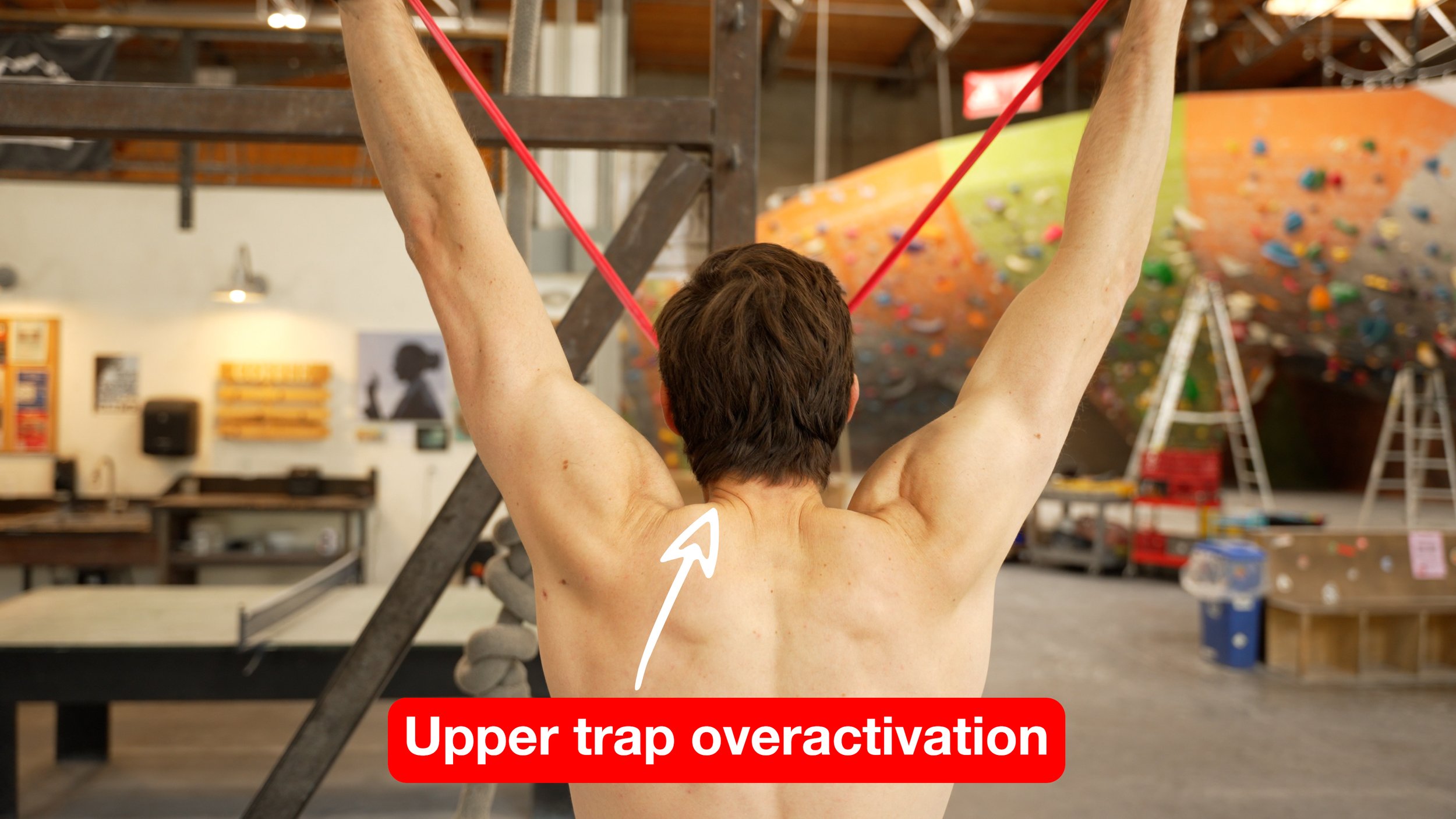
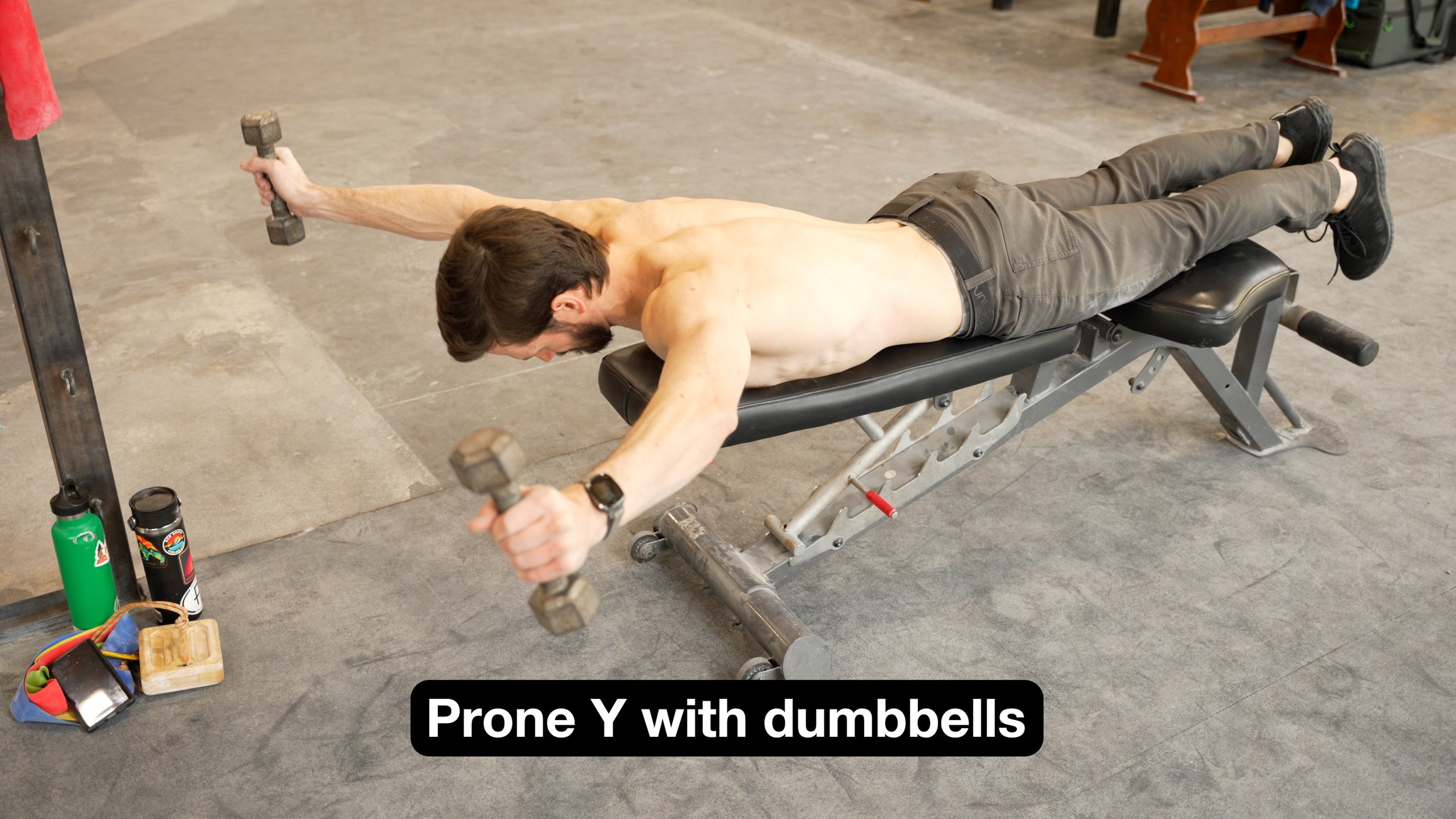
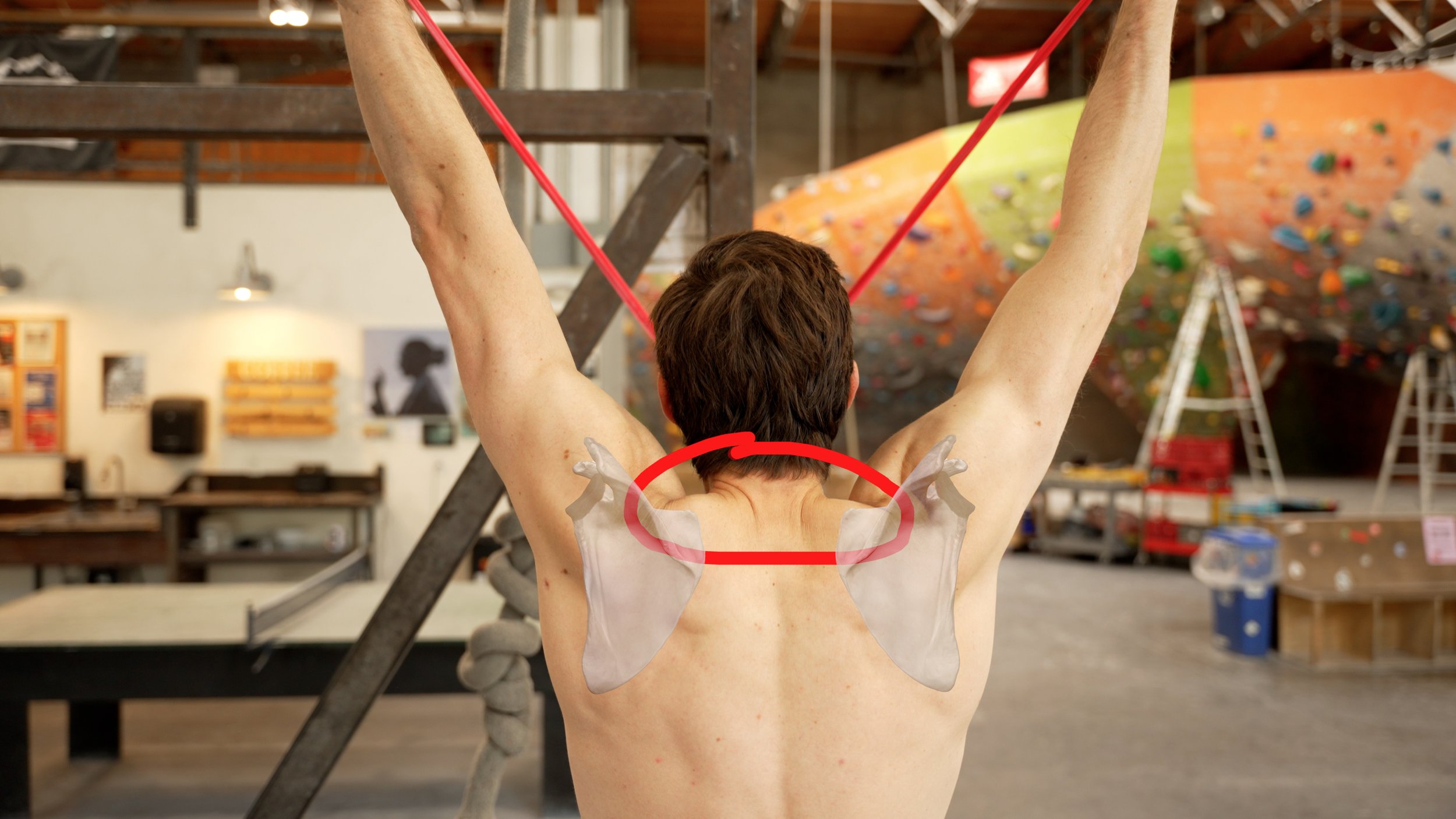
Climbing is an overhead sport that requires a ton of scapular retraction, and the lower trap is essential for making that happen. It’s an extremely important muscle that doesn’t often get the love it deserves. Strengthening it improves scapular and humeral mechanics which helps prevent shoulder injuries. It’s also helpful for preventing simple shoulder or neck pain that may develop due to overcompensation in the upper traps. Prone Y’s, TRX Y’s, or even band-resisted Y’s will all hit the lower trap. They can be done with a single or double-arm setup. But, the most important aspect is awareness while performing this exercise. If you feel most of the work being done in the upper trap and are unable to keep the shoulder blade back and down, I would recommend lowering the weight or resistance until you can improve your form.
#3 Hips
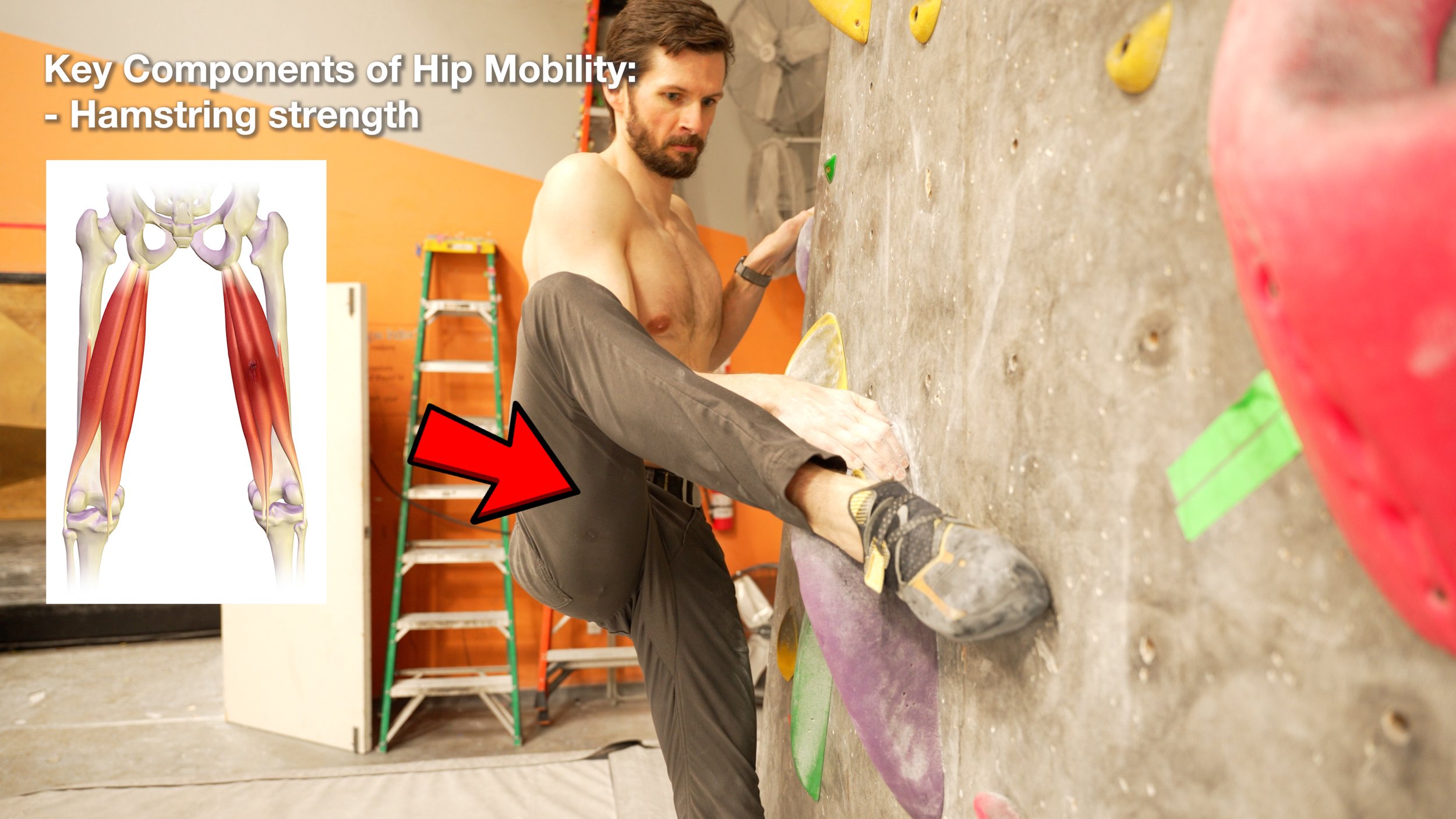
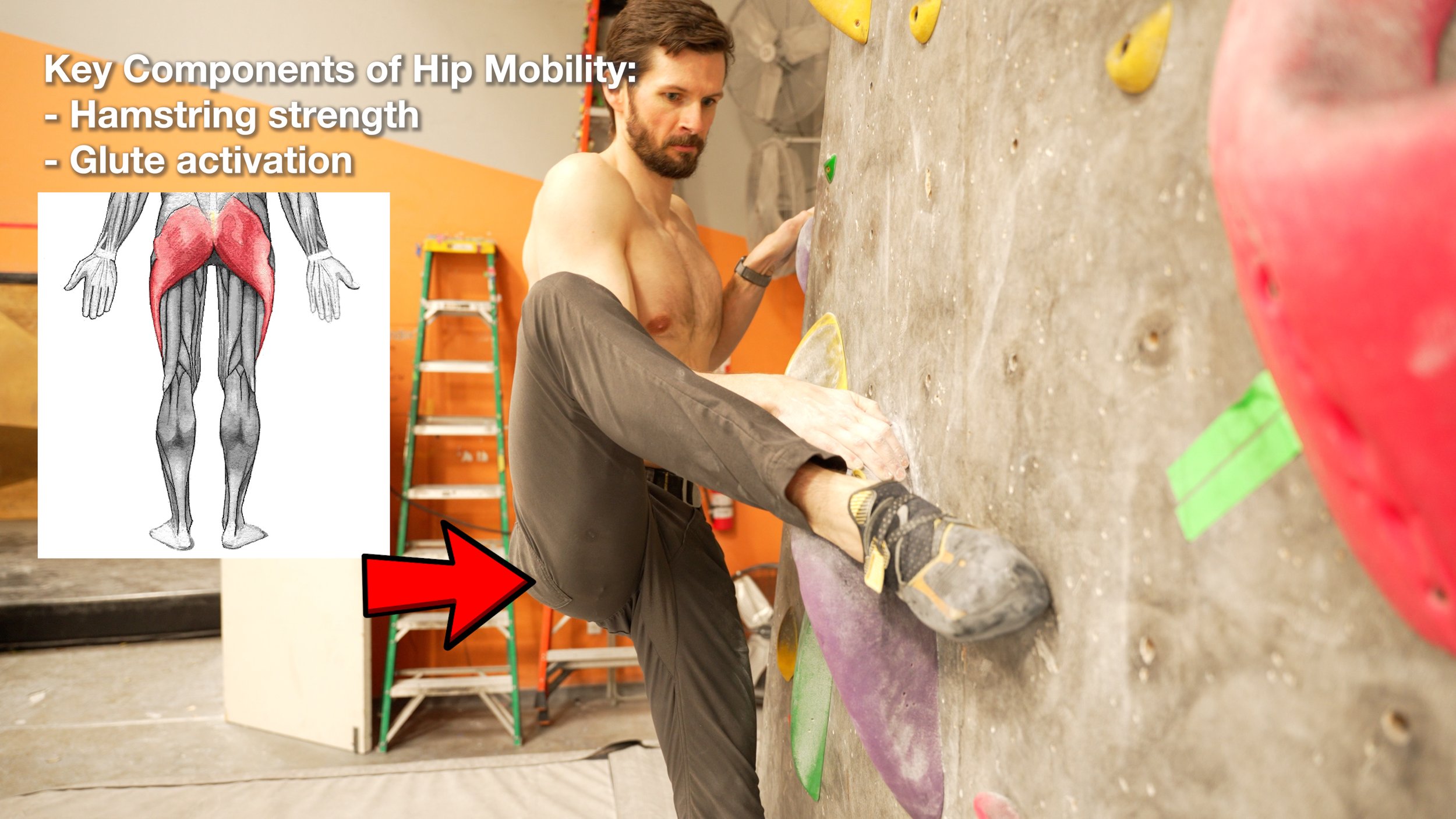
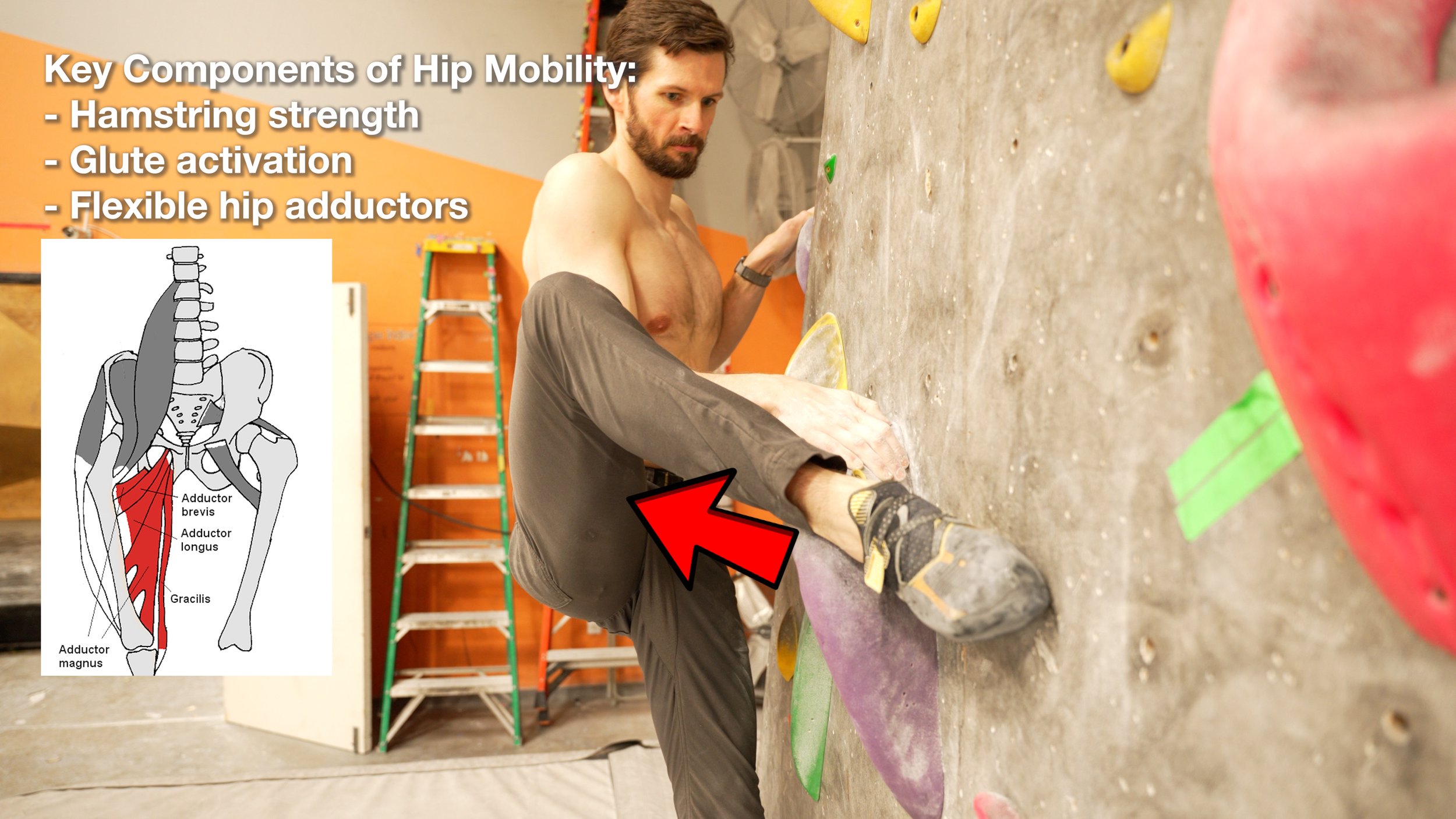
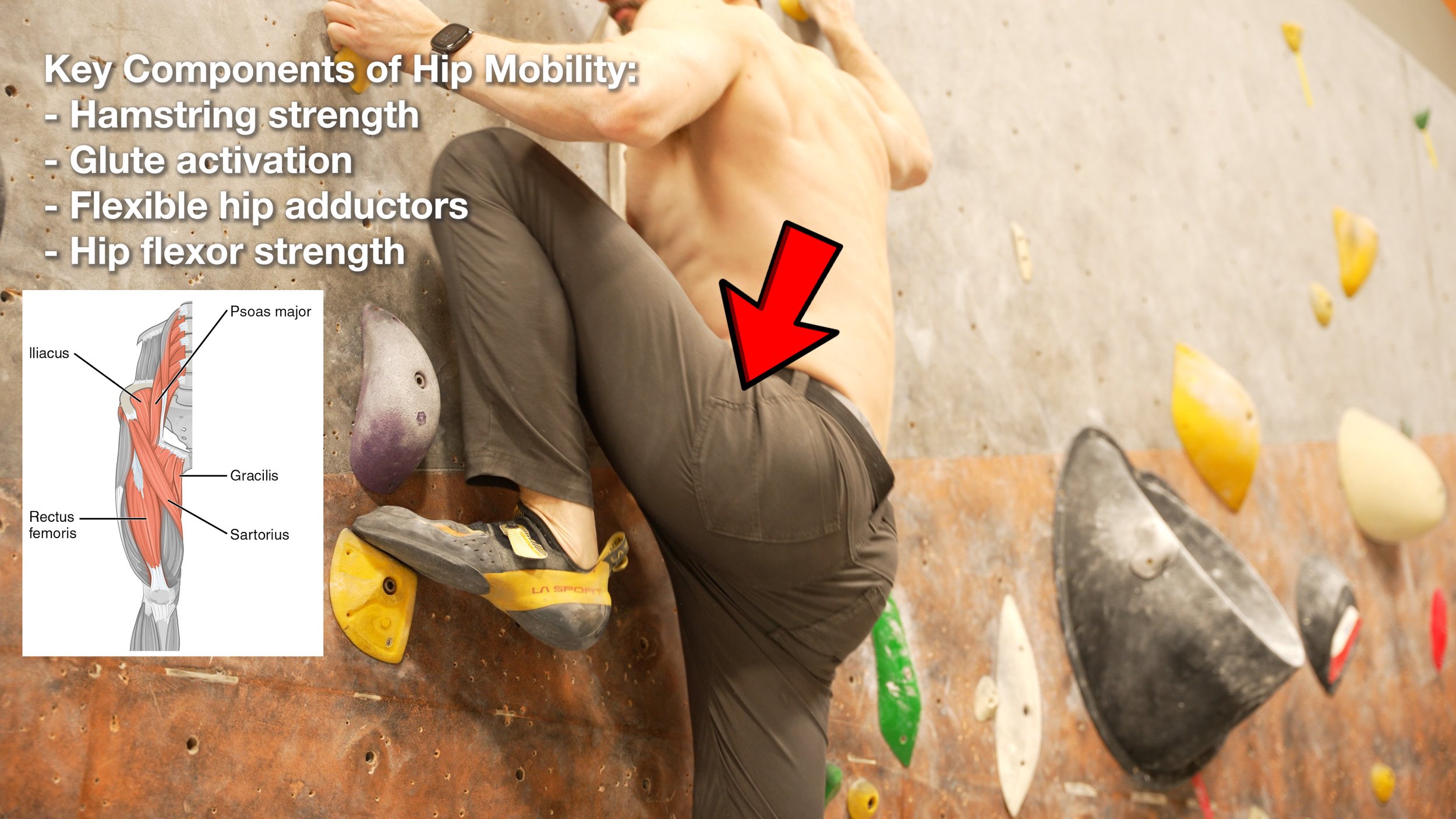
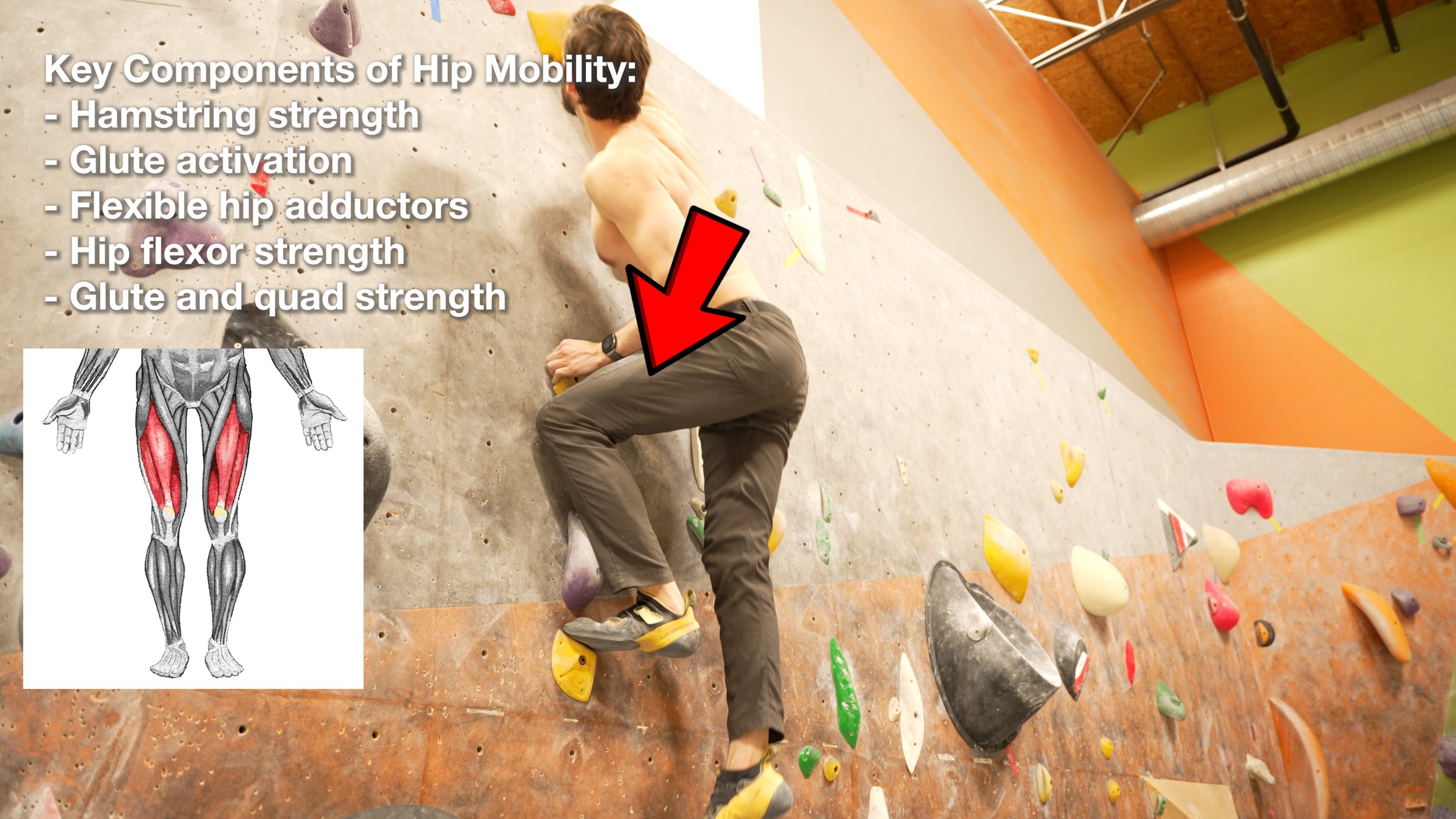
I can’t tell you how many climbers I’ve seen struggle to get high feet or engage a heel hook properly because they’re limited in their hips; I know, because I’ve been there and it’s something I’m still working on! There are actually several factors that go into good hip mobility. Having good hamstring strength allows you to feel comfortable pulling in externally rotated hip positions like heel hooks. Having good awareness of glute activation allows you to get into those nice hip positions in the first place. Having flexible hip adductors ensures they won’t stop you from getting into that position. Having strong hip flexors will help you get your feet up to those high holds. Having strong glutes and quads will help you press out of those deep squat positions. Obviously, there’s a lot going on with our hips, so to get better hip mobility it helps to identify which muscles are limiting you. In general, I recommend the frog stretch, deep single-leg box squats (hand assistance is OK!), and band-resisted hip flexion. High foot drills on the wall are always worthwhile too!
#2 Shoulder External Rotators
The external rotators of the shoulders (infraspinatus and teres minor) are two of the most vital muscles in climbing when it comes to injury prevention and climbing performance. They stabilize the shoulder and help pull us in closer to the wall when we’re in this common externally rotated position. Keep in mind, these are two smaller muscles that are asked to do a lot of work in climbers, which is partly why they tend to be undertrained as they will start off quite weak in the layperson. There’s a reason the face pull is one of my favorite exercises, because of its simplicity and effectiveness in training the external rotators. For a face-pull-mega-bonus-cheat-code, do it WITH an overhead press; that works the mid trap, external rotators, AND low trap. Another great low trap exercise is the “scarecrow” (with two arms) or “party rock” (with one arm) with dumbbells, making it a cinch to progressively overload. This exercise inherently has an eccentric emphasis because lowering the weight slowly is safer, but that doesn’t mean you can’t get a great concentric out of it too. I would also recommend starting with light weights and slowly working up with this one because it can be quite challenging! Finally, don’t lower the weight past horizontal as that is not ideal for climbers in my opinion.
#1 Flexor Digitorum Profundus
Wait, what? The FDP is the primary finger flexor muscle, how could that possibly be under-trained in climbers? Flexing our fingers is basically all we do! There are two common scenarios where I think the FDP really is an under-trained muscle.
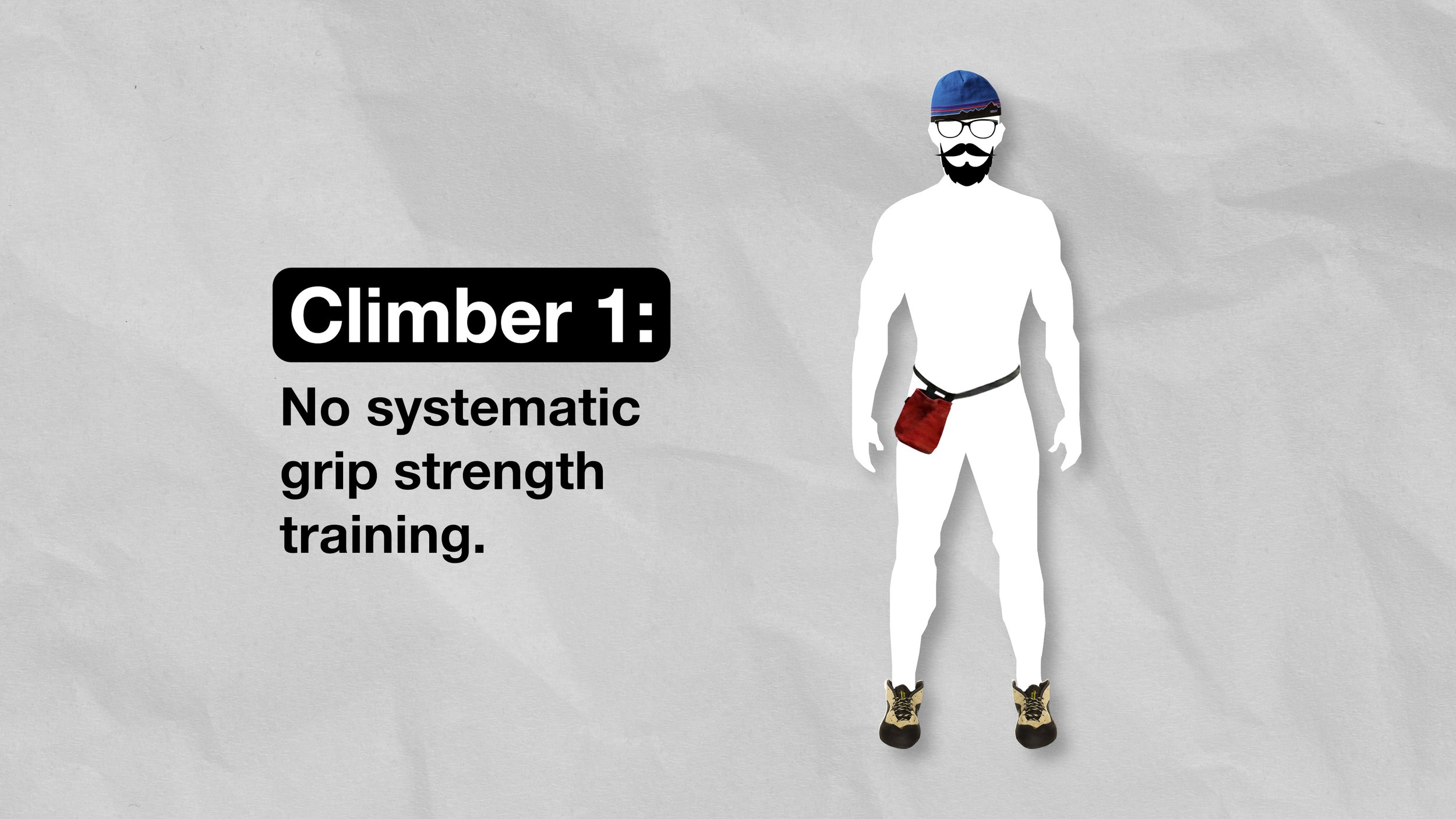
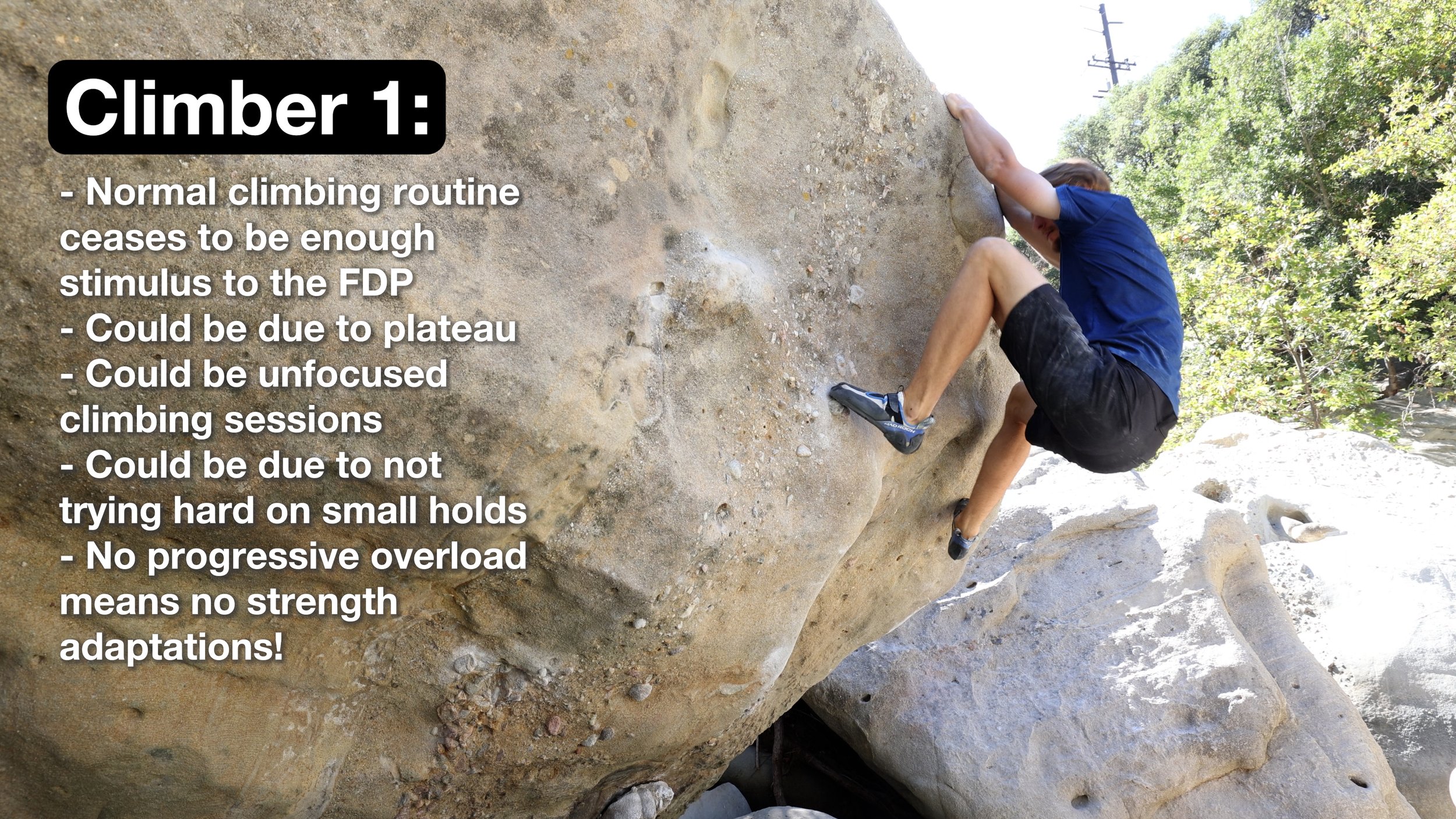
The first involves your average climber that doesn't do any targeted training for the FDP. You might think that with all the grabbing and holding and squeezing we do on the wall, our FDPs must be getting the best workout ever! And this is true… until it’s not. Without a systematic approach to training it, this climber may reach a point where their normal climbing routine stops putting enough load on the FDP to cause strength adaptations. Maybe they hit a plateau because their technique is limiting them, or maybe their climbing sessions are haphazard and unfocused, or maybe they’re just afraid of pulling hard on their fingers. Whatever the reason, they’re not progressively overloading their FDP, so it will cease to get stronger, their finger strength will plateau, and this will limit their climbing ability. Thus, their FDP is undertrained.
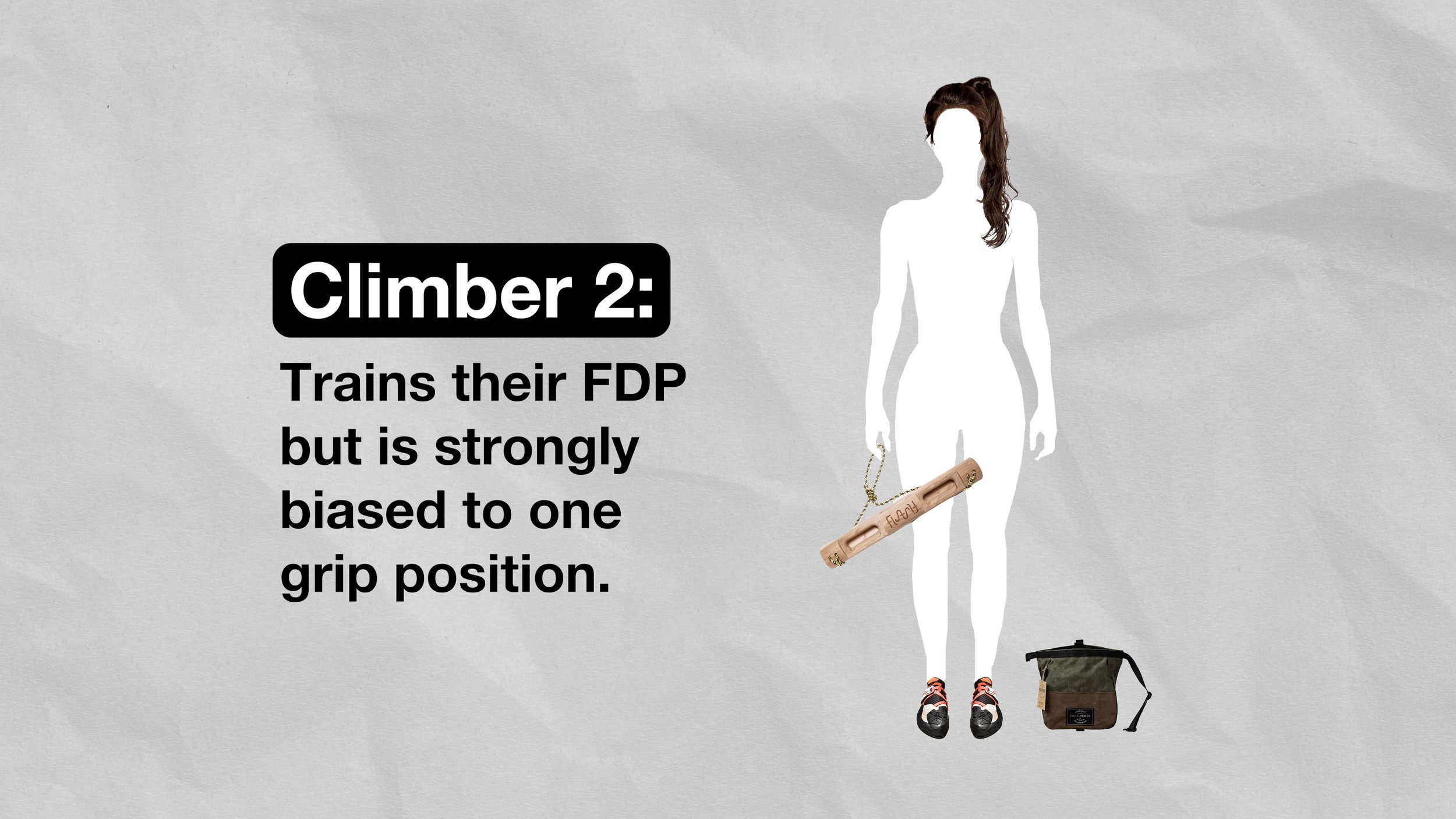

The second scenario involves a climber who does targeted finger strength training, but they have a strong bias toward one particular grip style. In this example, no matter what type of hold our climber friend here encounters, they will almost always try to use a half crimp or full crimp position. They feel strongest in this position, so naturally, they use and train it more. Of course, this eventually becomes a self-fulfilling prophecy, where the reason they “like” this position most is because they’ve effectively trained it more than any other. But, the second our crimping friend encounters a hold that requires a more open hand position, like a pocket or sloper, they’re unable to generate anywhere close to the same level of force. They suddenly feel several grades weaker and give up quickly. Now, this isn't always an FDP issue. As we know from earlier, sometimes lumbrical sensitivity causes issues on pockets and wrist weakness causes discomfort in open hand positions. But, barring those issues, lack of training to the FDP in open hand positions can become a huge limiter on certain climbs. Thus, again, the FDP is undertrained, just in a more specific way than the previous scenario.
If you fall into either of those categories and want to do something about it, in my opinion the hangboard is usually the way to go. Progressive overload is easy and it allows you to train all grip positions. I personally have been doing a lot of three finger drag training lately and have found I no longer need to crimp as many holds if I don’t want to, which is quite useful. Make sure you watch our video on what you should know before starting to hangboard if you decide to start.
CONCLUSION
Did anything on this list surprise you? What muscles do you believe are undertrained in climbers? Let us know your thoughts down in the comments as always!
We also have full length videos on several of the topics we talked about in this video, in case you want to learn more in-depth information about training them. We’ll link all of them near the top of the video description.
I also want to say a quick thank you to our YouTube members, some of which have been with us for a very long time! It’s only a few bucks a month to join and you get some nice perks out of it, so it’s a win-win!
Until next time…
Train. Climb. Send. Repeat!
DISCLAIMER
As always, exercises are to be performed assuming your own risk and should not be done if you feel you are at risk for injury. See a medical professional if you have concerns before starting new exercises.
Written and Presented by Jason Hooper, PT, DPT, OCS, SCS, CAFS
IG: @hoopersbetaofficial
Filming and Editing by Emile Modesitt
www.emilemodesitt.com
IG: @emile166




